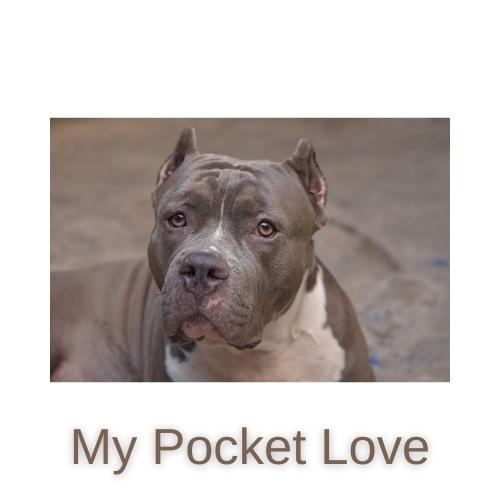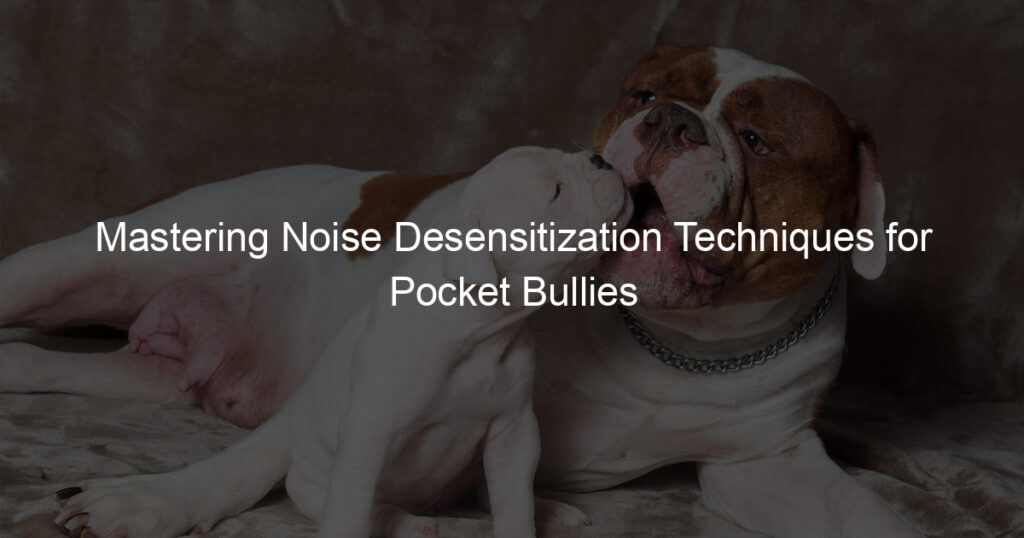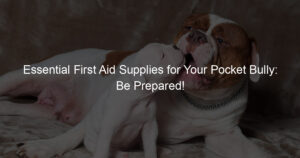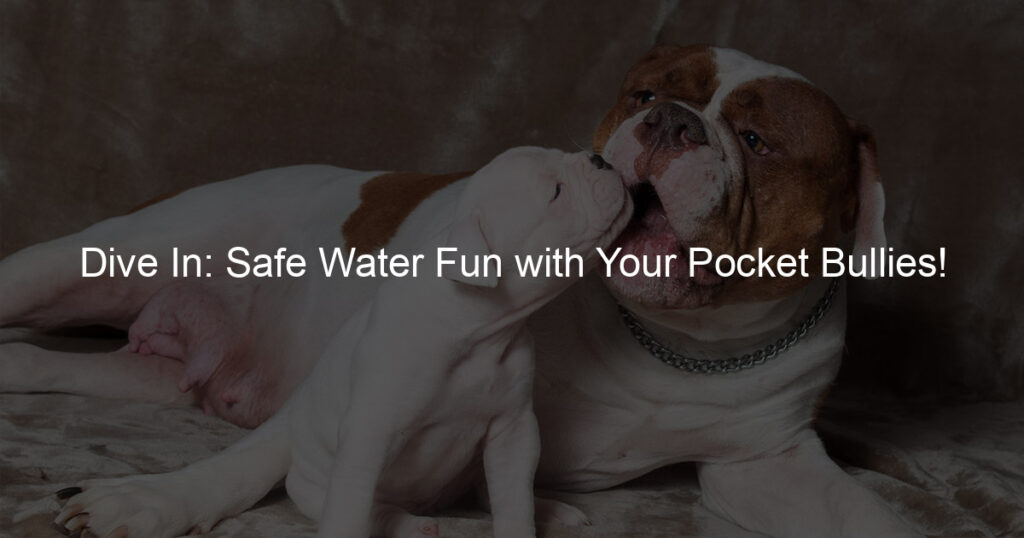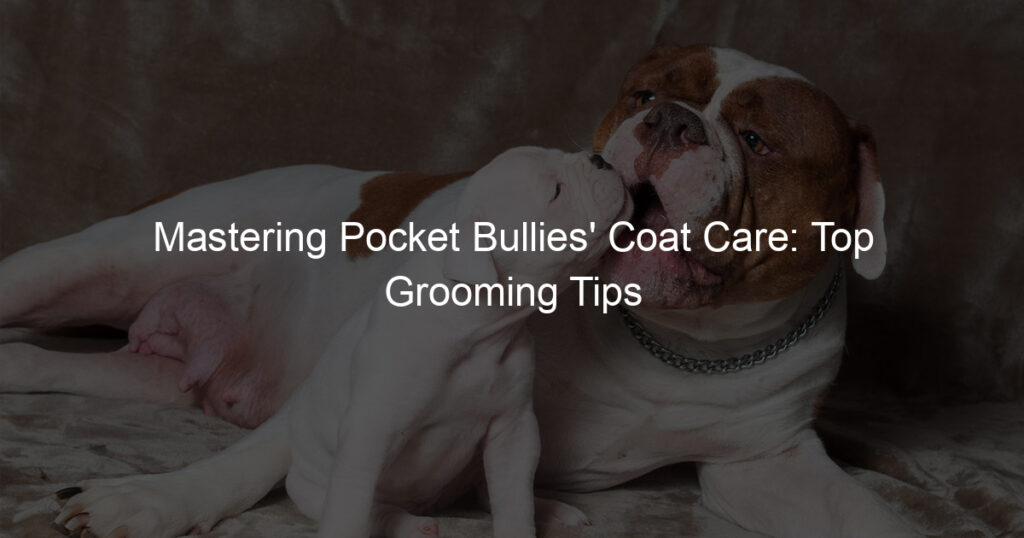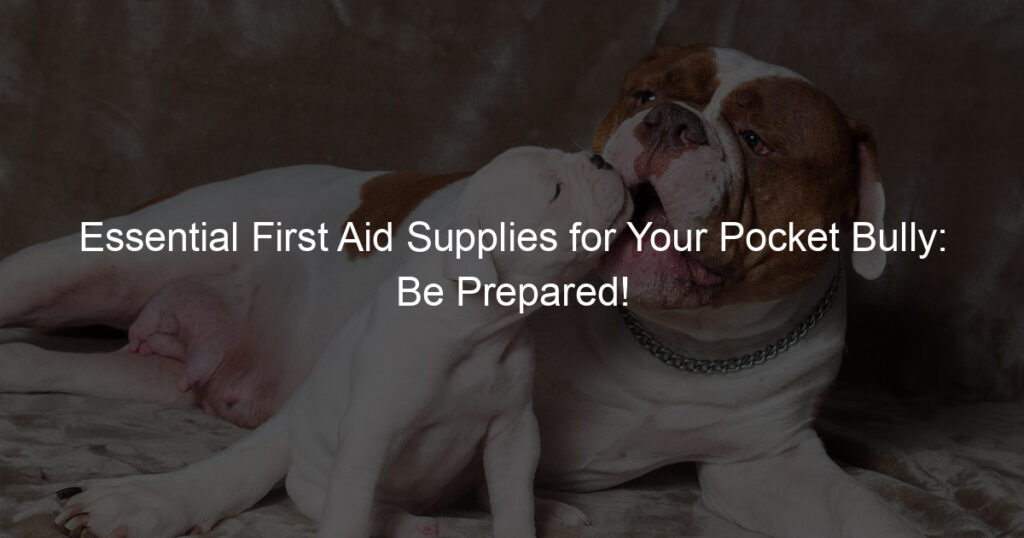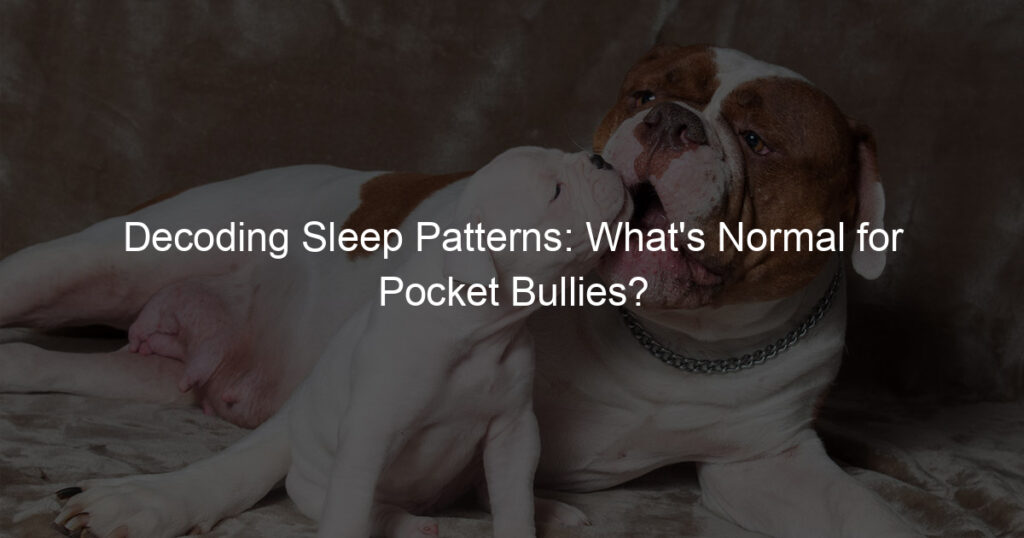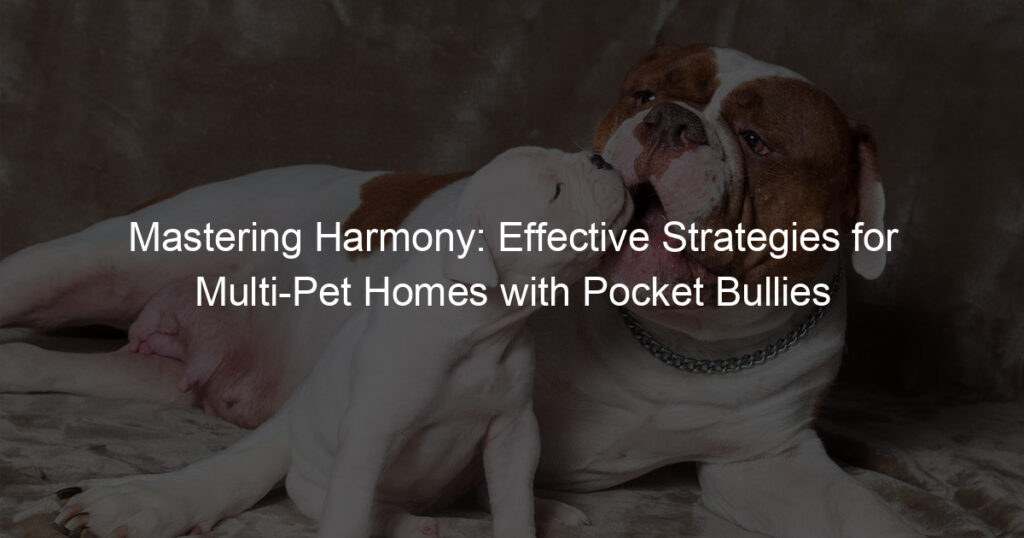
Introduction to Pocket Bullies Noise Sensitivity
Noise sensitivity, a common issue among dogs, is particularly prevalent in Pocket Bullies. This breed, known for its compact size and muscular build, often experiences anxiety and fear in response to loud noises. This blog post aims to shed light on this issue and provide useful insights for dog owners.
- Understanding Pocket Bullies Noise Anxiety
- Common Causes of Noise Phobia in Dogs
Noise anxiety in Pocket Bullies is a type of fear that arises from exposure to loud or unexpected sounds. It’s not just about the noise being unpleasant; it’s about the dog’s reaction to it. Dogs may express their anxiety in various ways, such as hiding, shaking, or even becoming aggressive. In severe cases, noise anxiety can lead to health issues like loss of appetite and sleep disorders.
Several factors can contribute to noise phobia in dogs. Some dogs may have had a traumatic experience related to a particular sound, leading to a lasting fear. Others may be more genetically predisposed to noise sensitivity. Common triggers include thunderstorms, fireworks, loud music, and even the sound of vacuum cleaners or other household appliances.
Understanding the root cause of your Pocket Bully’s noise sensitivity is the first step towards helping them cope. In the following sections, we will delve deeper into the importance of noise desensitization techniques in Pocket Bullies training, how to implement these techniques, and the challenges you may face during this process.
Importance of Noise Desensitization Techniques in Pocket Bullies Training
Noise desensitization techniques are essential in training Pocket Bullies. These techniques play a crucial role in helping dogs cope with different noise levels, thereby improving their overall behavior and well-being. Let’s delve into the benefits of reducing noise sensitivity in dogs and the impact of noise fear on Pocket Bullies behavior.
- Benefits of Reducing Noise Sensitivity in Dogs
- Impact of Noise Fear on Pocket Bullies Behavior
Reducing noise sensitivity in dogs, particularly Pocket Bullies, has numerous benefits. For one, it helps to enhance their comfort levels in various environments. This is particularly beneficial in urban settings, where noise is a constant factor.
Furthermore, noise desensitization can significantly improve a dog’s behavior. Dogs that are less sensitive to noise are generally calmer and exhibit fewer signs of stress or anxiety. This can lead to better interactions with both humans and other animals.
Lastly, noise desensitization can contribute to a dog’s overall health. Chronic stress from noise sensitivity can lead to various health issues, including heart problems and weakened immune systems. By reducing their noise sensitivity, you are helping to ensure your Pocket Bullies’ long-term health.
Noise fear can have a significant impact on Pocket Bullies’ behavior. Dogs that are afraid of noise often exhibit signs of distress, such as panting, shaking, and even aggression. This can make it difficult for them to interact with others and can lead to isolation.
Moreover, noise fear can lead to destructive behavior. Dogs may chew on furniture or other objects as a way to cope with their fear. This can lead to property damage and can also pose a risk to the dog’s health if they swallow something harmful.
Finally, noise fear can affect a dog’s training progress. Dogs that are constantly stressed or afraid are less likely to respond to training cues and may even develop behavioral problems. Therefore, noise desensitization techniques are vital in ensuring your Pocket Bullies’ well-being and progress in training.
In conclusion, noise desensitization techniques are an essential part of Pocket Bullies training. They not only improve the dogs’ comfort and behavior but also contribute to their overall health. By understanding and addressing noise fear, you can ensure your Pocket Bullies lead a happy, healthy, and well-adjusted life.
Understanding Noise Desensitization Techniques
When it comes to training Pocket Bullies, understanding noise desensitization techniques is crucial. These techniques can help your pet become more comfortable in noisy environments, reducing their anxiety and improving their overall behavior. Let’s delve into the basic principles of noise desensitization.
Basic Principles of Noise Desensitization
There are two fundamental principles of noise desensitization that are essential to understand: Gradual Exposure and Positive Reinforcement.
- Gradual Exposure
- Positive Reinforcement
Gradual exposure is a technique where the dog is slowly introduced to the noise that scares them. This process starts with a low volume of the noise and gradually increases over time. It’s like learning to swim; you start in the shallow end and slowly move towards the deep end as you become more confident.
Positive reinforcement involves rewarding your dog when they react positively to the noise. This could be a treat, a pat on the head, or verbal praise. The goal is to make your dog associate the noise with something positive, thus reducing their fear.
Understanding these principles is the first step towards implementing effective noise desensitization techniques. Remember, the goal is not to overwhelm your pet but to help them become more comfortable with different sounds in a controlled and supportive manner.
Common Techniques for Noise Desensitization
When it comes to noise desensitization, there are a couple of techniques that have proven to be effective. Let’s take a closer look at these methods.
- Use of Noise CDs
- Desensitization and Counterconditioning
One of the most common techniques for noise desensitization is the use of noise CDs. These CDs contain a variety of sounds that your Pocket Bully may find distressing, such as thunder, fireworks, or traffic noise. The idea is to play these sounds at a low volume and gradually increase the volume over time. This helps your dog get used to these noises and reduces their fear response. It’s like practicing for a big game – the more you practice, the better you get at handling the real thing.
Another effective technique is desensitization and counterconditioning. This method involves pairing the scary noise with something your dog loves, like a favorite toy or treat. For example, you might play the noise at a low volume while giving your dog a treat. Over time, your dog will start to associate the noise with the treat, rather than feeling scared. This technique is a bit like teaching your dog a new trick – it takes time and patience, but the results can be very rewarding.
Remember, every dog is different and what works for one might not work for another. It’s important to be patient and consistent with your training. And, as always, if you’re having trouble, don’t hesitate to reach out to a professional for help.
Implementing Noise Desensitization Techniques in Pocket Bullies Training
Training your pocket bully to handle noise can be a challenging task. However, with the right approach and patience, it is possible to desensitize your pet to various sounds. The following is a step-by-step guide to help you train your pocket bully against noise.
Step-by-Step Guide to Training Bullies Against Noise
- Start with Low-Intensity Noises
- Gradually Increase Noise Intensity
- Reinforce Positive Behavior
Begin your training with low-intensity noises. This could be the sound of a soft clap, a whisper, or the rustling of paper. The goal is to expose your pocket bully to sounds that are not too overwhelming. Monitor your pet’s reaction to these sounds. If they remain calm, reward them with a treat or praise.
Once your pocket bully is comfortable with low-intensity noises, gradually increase the noise level. This could be the sound of a door closing, a phone ringing, or a car passing by. Remember, the key is to increase the noise level slowly and not to rush the process. This gradual increase allows your pet to adjust to louder sounds without getting overly anxious or scared.
Positive reinforcement is a crucial part of noise desensitization training. Whenever your pocket bully reacts calmly to a noise, reward them with a treat, praise, or a favorite toy. This helps them associate the noise with positive experiences, making them less likely to be afraid in the future.
Implementing these noise desensitization techniques can significantly improve your pocket bully’s reaction to sounds. Remember, patience and consistency are key in this process. With time, your pet will learn to handle noise in a calm and composed manner.
Case Study: Successful Noise Desensitization Training
Let’s delve into a real-life example of successful noise desensitization training. This case study will provide a clearer understanding of the process and its effectiveness.
- Background of the Case
Our subject is a one-year-old Pocket Bully named Max. Max was extremely sensitive to loud noises, such as thunderstorms and fireworks. His owners noticed his distress and sought help to alleviate his fear.
- Training Process
The training process began with low-intensity noises. Max was gradually exposed to these sounds, starting with a low volume and slowly increasing it over time. The key was to ensure that Max was comfortable at each level before moving on to the next. Positive reinforcement was used throughout the process. Whenever Max reacted calmly to the noise, he was rewarded with his favorite treat.
- Results and Key Takeaways
After several weeks of consistent training, Max’s noise sensitivity significantly decreased. He was no longer showing signs of distress during thunderstorms or fireworks. This case study highlights the effectiveness of noise desensitization techniques in Pocket Bullies training. It also emphasizes the importance of patience and consistency in the training process.
In conclusion, noise desensitization training can be highly effective when implemented correctly. It requires patience and consistency, but the results can significantly improve the quality of life for your Pocket Bully.
Challenges and Solutions in Noise Desensitization Training
Training a dog, especially a Pocket Bully, to be less sensitive to noise can be a challenging task. However, with the right approach and understanding of the common problems, it can be made easier. Let’s take a look at some of the common challenges faced during noise desensitization training and how to overcome them.
Common Problems in Reducing Noise Sensitivity in Dogs
There are two main problems that often occur when trying to reduce noise sensitivity in dogs. These are:
- Resistance to Training: Some dogs may resist training, especially when it involves something they are afraid of, like loud noises. This resistance can make it difficult for the dog to learn and progress in the training.
- Progress Plateaus: At times, a dog may show improvement initially but then stop making progress. This is known as a progress plateau and can be frustrating for both the dog and the trainer.
Understanding these challenges is the first step towards overcoming them. Now, let’s discuss some effective solutions to these problems.
Effective Solutions for Noise Fear in Pocket Bullies
Here are two effective solutions that can help overcome the challenges of noise desensitization training:
- Consistent Training: Consistency is key when it comes to training. Regular and consistent training sessions can help a dog gradually get used to loud noises and reduce their fear.
- Professional Assistance: If you’re struggling with the training, don’t hesitate to seek professional help. A professional dog trainer can provide valuable guidance and techniques to help your dog overcome its fear of loud noises.
In conclusion, while noise desensitization training can be challenging, with the right approach and solutions, it is possible to help your Pocket Bully overcome its fear of loud noises.
Effective Solutions for Noise Fear in Pocket Bullies
Addressing noise fear in Pocket Bullies can be a challenging task. However, with the right approach, it’s possible to help your furry friend overcome this fear. Here are two effective solutions:
- Consistent Training
- Professional Assistance
Consistent training plays a crucial role in helping Pocket Bullies overcome noise fear. It’s important to expose your dog to different types of noise in a controlled environment. This helps them understand that these sounds are not threats. Start with soft noises and gradually increase the volume as your dog gets comfortable. Remember, patience is key. It might take weeks or even months for your dog to get used to certain sounds. But with consistent training, you’ll see progress.
If you’re finding it difficult to help your Pocket Bully overcome noise fear, don’t hesitate to seek professional assistance. A professional dog trainer or a behaviorist has the expertise to handle such issues. They can provide customized training programs based on your dog’s specific needs. They also have the knowledge to ensure that the training process is safe and effective. So, if your efforts aren’t yielding the desired results, professional assistance could be the solution.
Overcoming noise fear in Pocket Bullies might seem daunting, but with consistent training and professional assistance, it’s achievable. Remember, every dog is unique, so what works for one might not work for another. It’s all about finding the right approach for your furry friend.
Conclusion: Mastering Noise Desensitization Techniques for Pocket Bullies
As we conclude this comprehensive guide, let’s take a moment to reflect on what we’ve learned about noise desensitization techniques for Pocket Bullies. We’ve explored the importance of these techniques, how to implement them, and the challenges you might face along the way. Now, let’s recap and look towards the future of Pocket Bullies behavior training.
- Recap of Pocket Bullies Noise Anxiety and Training Techniques
We began by understanding that Pocket Bullies, like many other breeds, can suffer from noise anxiety. This condition can lead to distressing behaviors and affect the overall well-being of your pet. To combat this, we delved into noise desensitization techniques. These techniques, which include gradual exposure to noise and positive reinforcement, have been shown to significantly reduce noise anxiety in Pocket Bullies. We also discussed the importance of patience and consistency in the training process.
- Future Directions in Pocket Bullies Behavior Training
Looking ahead, the field of Pocket Bullies behavior training continues to evolve. As we gain more understanding of dog psychology and behavior, new methods and techniques are being developed. In the future, we can expect more sophisticated and effective training techniques that will make the process of noise desensitization even more efficient and less stressful for both the dog and the owner.
Mastering noise desensitization techniques for Pocket Bullies is not an overnight process. It requires patience, understanding, and a lot of love. But with the right approach and the right techniques, you can help your Pocket Bully overcome their fear of noise and live a happier, healthier life.
Remember, the journey of training is just as important as the destination. So, take your time, enjoy the process, and celebrate every small victory along the way.
